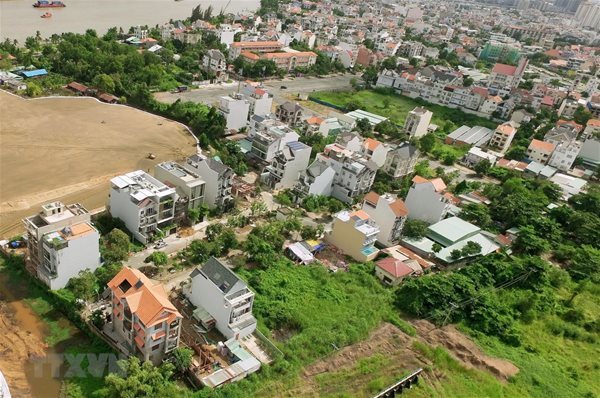 |
| The gradual decline of the added value of real estate in the GDP is due to the lower growth of the sector versus the overall growth of the economy - PHOTO: THANH HOA |
The system of national accounts (SNA) introduces the international standard industrial classification (ISIC), which is used to calculate the GDP of most countries in the world. In Vietnam, the ISIC has been officially used under the name of Vietnam standard industry classification (VSIC) since 1993. In the ISIC and VSIC, real estate is classified in the level-1 group with the symbol L and the level-2 group as the industry 68.
Under the ISIC and VSIC, real estate is in the level-1 group, similar to other major sectors such as agriculture, forestry and fisheries, or the processing and manufacturing sector. This classification partly shows the importance of this sector.
In view of the added value of real estate in the GDP, figures 1 and 2 show the share of added value of real estate in the GDP has tended to decline, falling from 6.7% in 2005 to 4.6% in 2018.
The gradual decline of the added value of real estate in the GDP is due to the lower growth of the sector versus the overall growth of the economy, meaning that other sectors in the economy have very high growth, especially the processing and manufacturing sector, which has much higher growth than the GDP growth (Figure 2). Unfortunately, the processing and manufacturing sector in Vietnam is essentially a sub-contracting, assembly industry which depends greatly on foreign direct investment (FDI) enterprises. It has very low added value, and the added value for Vietnam is even much lower, but causes the most environmental pollution, while real estate is one of the industries which have the lowest greenhouse emissions.
According to the Statistical Yearbook, the average growth of the ownership payment in the 2013-2018 was some 11% higher than the average GDP growth in the period. In 2019, FDI enterprises remitted some US$18 billion from Vietnam, reducing the gross national income (GNI) against the GDP. In 2013, the GNI was equivalent to 97% of the GDP, but in 2018, the rate fell to 92% of the GDP.
However, real estate contributes to the economy not only through property trading. It also has significant contribution through land as capital.
According to figures released by the Ministry of Planning and Investment in the White Book of Enterprises 2020, the elasticity of capital in money of the corporate sector is 0.17, the elasticity of capital in land is 0.2 and the elasticity of capital in labor is 0.63. From these figures it is estimated that the contribution of the total factor productivity (TFP) to the value added growth of the economy is 43%, the contribution of labor some 20%, capital in money about 15% and capital in land 22%.
The contribution of land to the value added growth of the corporate sector is about 14.9% and to the GDP nearly 6%. So, exclusive of its indirect contribution in the construction sector, the real estate sector contributes some 11% to the GDP, including 6% from land and 5% from real estate trading. As such, evaluation of real estate and the money flow between banks and real estate is the lifeline of the economy (see table). SGT
Bui Trinh

Real estate firms spend trillions of VND to buy land plots
The real estate market has not recovered well after COVID-19, but property firms are now in a position to buy land plots at reasonable prices.

Public investment to give push to Vietnam's real estate market
New policies are expected to accelerate the recovery of the real estate market and lay a firm foundation for the market’s long-term development.